206 N. Dillard St. was built in 1908-1909 - one of the later additions to the 'Mansion Row' architecture of Dillard St. - by CC Thomas, who was a founder of the Thomas and Howard wholesale grocers.
Above, the view north on Dillard St. - the large columns on the second house on the right belong to 206 N. Dillard.
The large and beautiful central staircase was said to have been designed for the Thomas' daughter's eventual wedding (she was 15 when the house was constructed.) The story goes that, when the time came, she opted to elope instead. Too much pressure, perhaps - it's quite a staircase.
Mr. Thomas died in 1932 and Mrs. Thomas in 1943. The house then became a USO (United Service Organizations) facility - providing social events/respite for soliders.
USO, likely 1940s.
The opening party for the USO, 1943 - gathered on the pressure-packed stairs.
(Courtesy Durham County Library)
By the 1960s, it was no longer a USO house, and had become a single family home.
CC Thomas house, 1964.
This house survived urban renewal through the activism of the neighbors, but most of what was around it was torn down, including 210 N. Dillard, visible in the above pictures to the north of the house. 206 N. Dillard was converted to apartments by the 1970s.
Looking east, early 1970s.
By the late 1970s, the house was falling into disrepair.
204 and 206 N. Dillard, looking northeast from Liberty and Dillard, ~1980
By the 1990s, this house was in really bad shape. I wish I had a copy of the picture Brent Lockwood showed me of the house when he first bought it - it looked abysmal. He purchased the house, I believe, in the mid-1990s and lived in it while he renovated it. After completing the house, he leased it to Sunshares (the early curbside recycling provider in Durham) and eventually sold the house to the Durham Crisis Response Center. The crisis response center provides services for victims of rape and domestic violence.
As such, I've heard through the grapevine that they are none too pleased that the county is funding a facility for violent youth/sexual offenders next door. But why would anyone have a problem with that?
206 North Dillard, looking east, 2006.


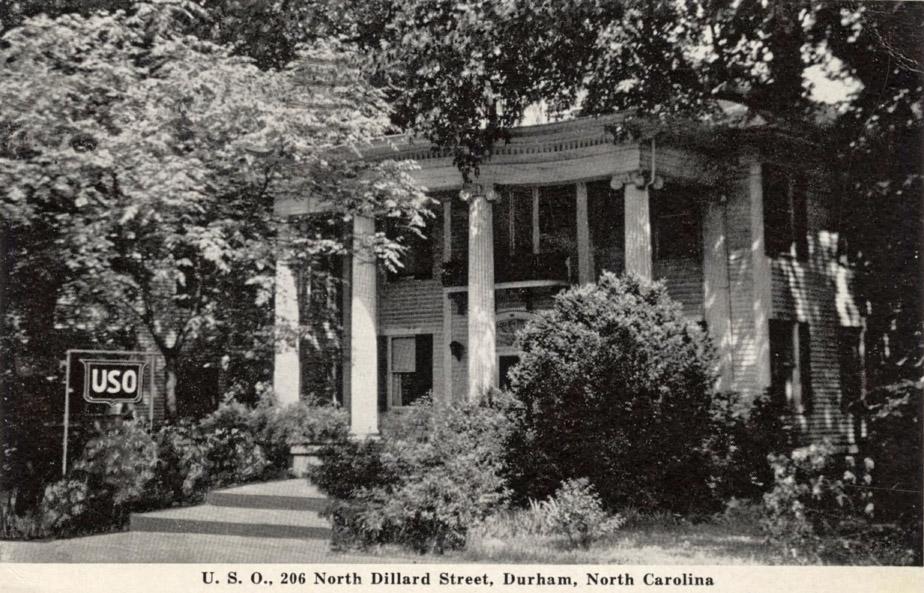


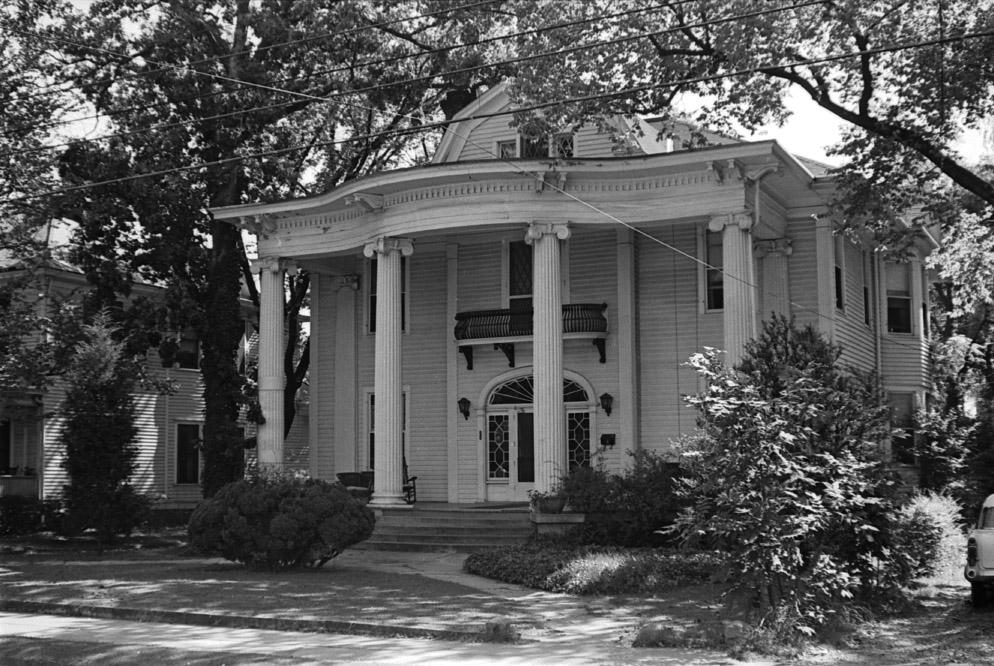
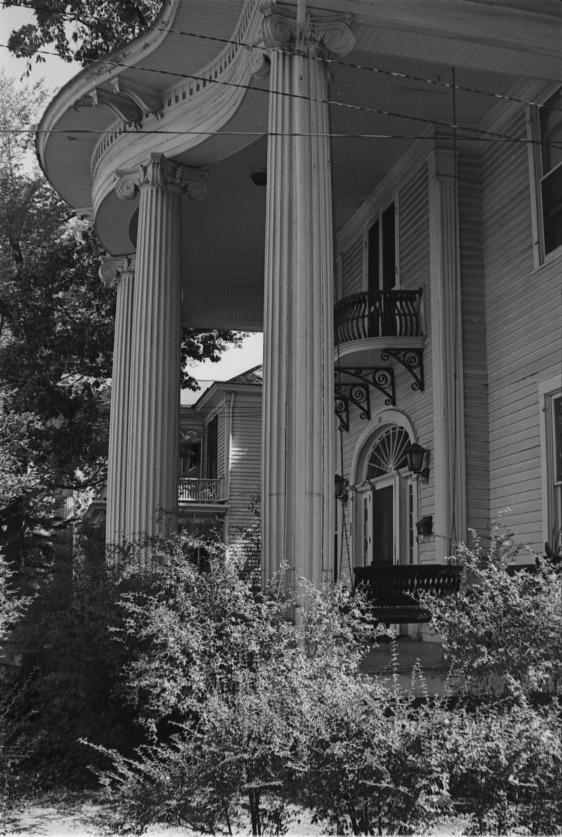
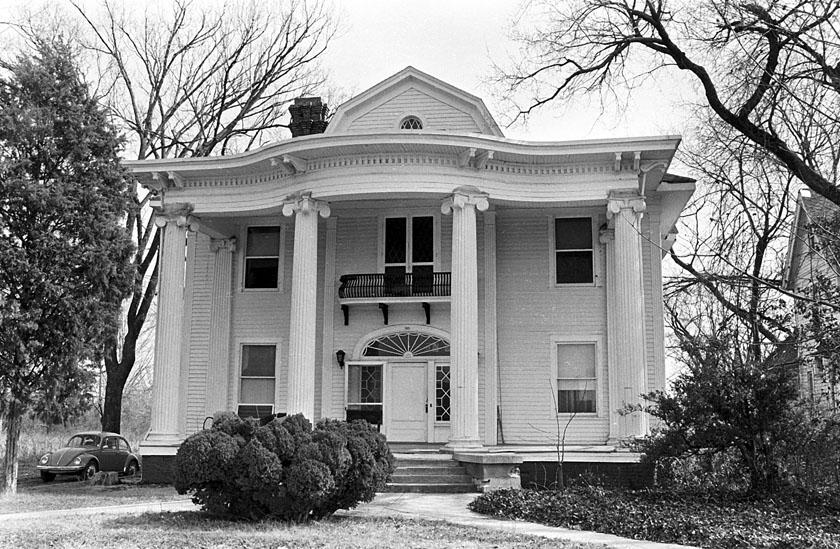

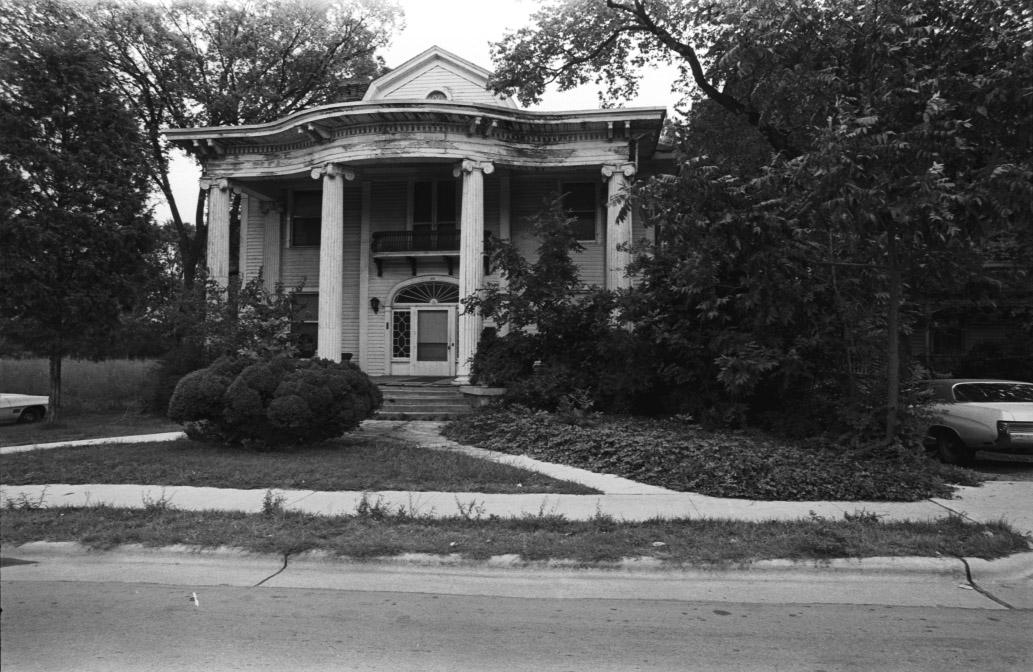


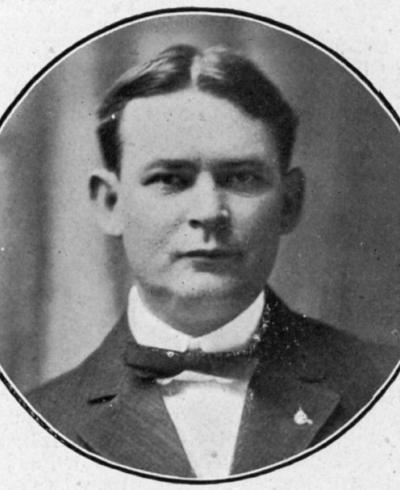
Comments
Submitted by Phil (not verified) on Fri, 8/31/2007 - 3:53am
I was under the impression (perhaps mistaken) that the home was briefly used as an "office suites" building (you know, where you or your company rents one or two rooms, and all the renters share the conference room, the lobby, the receptionist, and the phone center). I think that the old library on W. Main (next to First Pres) also tried to live like this for a while.
In my early days of self-employment, I managed one of those facilities. It was kind of fun. Even on the day when the leaseholder stepped on the power plug to our PBX phones, killing several of our tenant/client calls. Oh glory.
One of things about being a consultant: when your very first client goes bankrupt, everything else starts looking relatively pleasant.
Submitted by Rik (not verified) on Wed, 7/22/2009 - 9:13pm
This house came up in a conversation with my mother over lunch today. According to her two of my uncles were service men her sisters met at the USO during the war. The men were stationed at Camp Butner.
Submitted by Christopher (not verified) on Wed, 2/24/2010 - 10:16pm
Especially considering the loss of, essentially, the rest of the block, it's great that this house was spared. The great detailing and unusual shape of the house, and the fine renovation, make it a wonderful asset to still have around. Too bad it has to share the street with the WTVD fortress.
Submitted by Smith (not verified) on Fri, 3/26/2010 - 3:41am
Didn't this house used to be Durham Business School in
the 1920's? My grandmother graduated from Durham Bussiness School and it was in a big old white house just like this right around Dillard & Liberty. Please respond. If it wasn't this house, which could it be. I have a photo of her graduation class along with her professors in the 1920's. PLEASE RESPOND.
Submitted by Toby Berla on Wed, 4/11/2012 - 3:00pm
The Herald-Sun has a story on this building, and the trials and tribulations of the crisis center:
http://www.heraldsun.com/view/full_story/18191708/article-Crisis-center…-?
Here's the text:
Crisis center struggling to repair office
By Melody Guyton Butts
mbutts@heraldsun.com; 919-419-6684
DURHAM – The stately North Dillard Street mansion that houses the Durham Crisis Response Center’s main office is, quite literally, falling apart. Water trickles down the walls when it rains. The roof is collapsing. Broken windows invite insects. Water damage is apparent on the ceiling.
The list of needed repairs has been mounting for a while now, crisis line coordinator Deanna Manley said, but the center has focused the money that it does have on meeting the needs of the thousands of victims of domestic violence and sexual abuse that seek its services each year.
The center’s emergency shelter took in 192 people last year, with at least 37 turned away for lack of space, and 25 families were helped by the center’s longer-term, transitional housing program. About 3,800 calls were answered by the center’s crisis line last year (600 in Spanish), up from an average of about 3,300 in recent years. And the center also offers services like counseling, support groups and court advocacy.
For the women and children who seek services from the Durham Crisis Response Center, “to get out of their situation is sometimes, quite literally, a matter of life and death,” Manley said. It’s the only domestic violence and sexual abuse agency in Durham County.
The center’s ultimate goal is to add beds to its shelter, but for now, the goal is to make the office, at 206 N. Dillard St., safe and tolerable for employees and visitors.
According to history archive website Open Durham, the Neoclassical Revival-style building – known by some as perhaps the most recognizable Durham landmark in the film “Main Street” – was built in 1909. That means that the window blown out by a late February storm must be replaced by a custom-sized pane at a cost of at least $1,000.
Because of the poor insulation provided by the windows, Manley has to blast the air conditioning at full capacity on summer mornings so that she can tolerate her third-floor office when miserable midafternoon temperatures arrive.
She figures the repairs will run somewhere between $10,000 and $20,000. The center hopes to raise some of that money through its second annual golf tournament Sunday at The Crossings Golf Club. Last year’s event raised about $3,000.
“We’re hoping to make this our one key project annually,” Manley said.
The center also raises money through its 2715 Chapel Hill Blvd. thrift shop Pennies for Change, through various other fundraisers throughout the year and by collecting donations. Visit www.durhamcrisisresponse.org for information.
Add new comment
Log in or register to post comments.